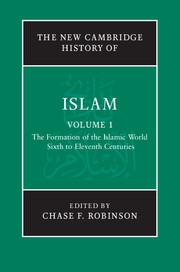Book contents
- Frontmatter
- Introduction
- PART I THE LATE ANTIQUE CONTEXT
- 1 The resources of Late Antiquity
- 2 The late Roman/early Byzantine Near East
- 3 The late Sasanian Near East
- 4 Pre-Islamic Arabia
- PART II UNIVERSALISM AND IMPERIALISM
- PART III REGIONALISM
- PART IV THE HISTORIOGRAPHY OF EARLY ISLAMIC HISTORY
- Conclusion: From formative Islam to classical Islam
- Glossary
- Bibliography
- Index
- Plate Section
- References
3 - The late Sasanian Near East
from PART I - THE LATE ANTIQUE CONTEXT
Published online by Cambridge University Press: 28 March 2011
- Frontmatter
- Introduction
- PART I THE LATE ANTIQUE CONTEXT
- 1 The resources of Late Antiquity
- 2 The late Roman/early Byzantine Near East
- 3 The late Sasanian Near East
- 4 Pre-Islamic Arabia
- PART II UNIVERSALISM AND IMPERIALISM
- PART III REGIONALISM
- PART IV THE HISTORIOGRAPHY OF EARLY ISLAMIC HISTORY
- Conclusion: From formative Islam to classical Islam
- Glossary
- Bibliography
- Index
- Plate Section
- References
Summary
The sources
As opposed to the Arsacids, the Sasanians, like their Achaemenid ‘ancestors’ (see below), tell us a great deal about their notions of government, their public appearances and their political aspirations in both the domestic and foreign spheres. Their trilingual, bilingual or monolingual inscriptions (of the third century CE), the most prominent of which are probably Shāpūr (Shābuhr) I’s res gestae (ŠKZ), and the inscriptions of Diocletian’s rival Narseh from Pāikūlī (NPi), tell us not only about the conflicts with Rome (ŠKZ) and dynastic enemies (NPi) respectively, but also reveal much about the early Sasanian court, its officials and the male and female members of the ruling family. In particular, they show how their rule was legitimised and how the kings represented themselves in their position as rulers (see below). It is no coincidence that Shāpūr had the ‘account of his deeds’ (Tatenbericht) placed on the Kaʿba-i Zardusht at Naqsh-i Rustam. This building had already been of particular importance in pre-Sasanian times (although the exact nature of this importance is not known to us), and it was situated at a place where the Achaemenids (who were no longer known to the Sasanians by name) had commemorated themselves in rock tombs and bas-reliefs.
Keywords
- Type
- Chapter
- Information
- The New Cambridge History of Islam , pp. 98 - 152Publisher: Cambridge University PressPrint publication year: 2010
References
- 9
- Cited by

